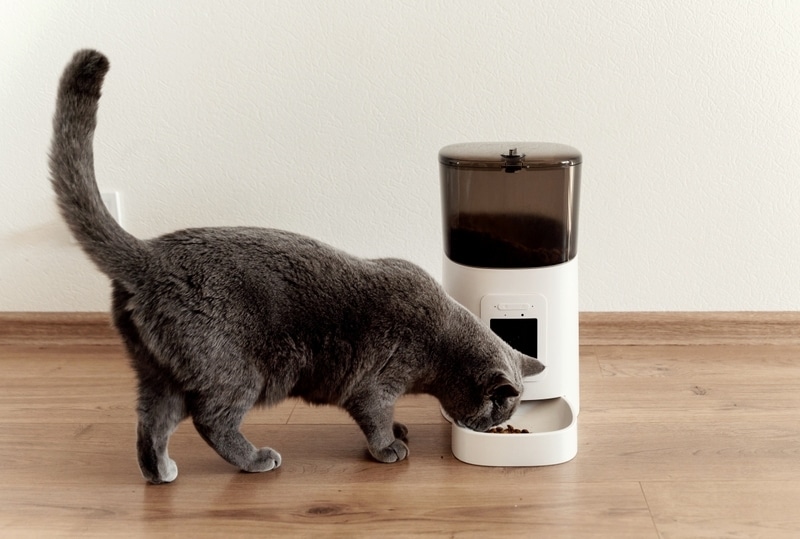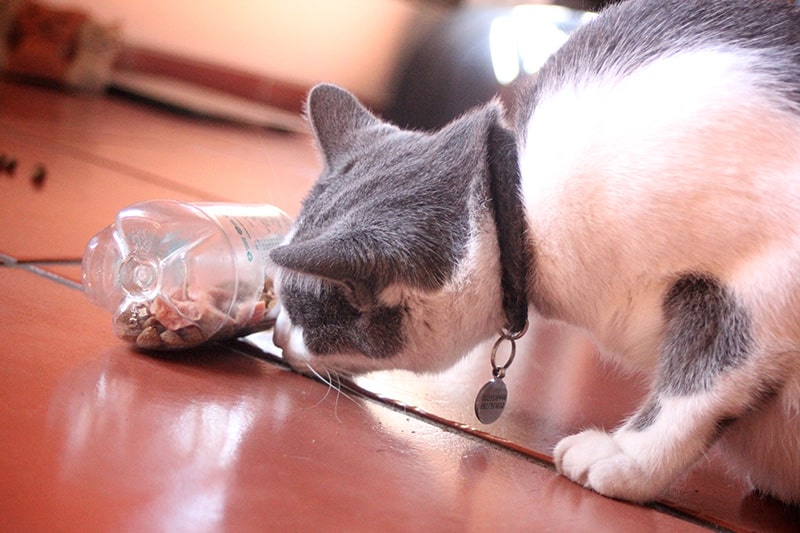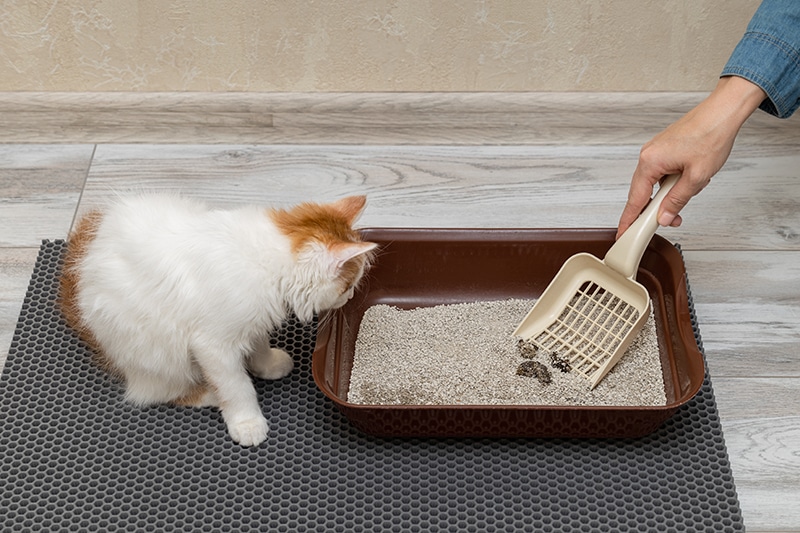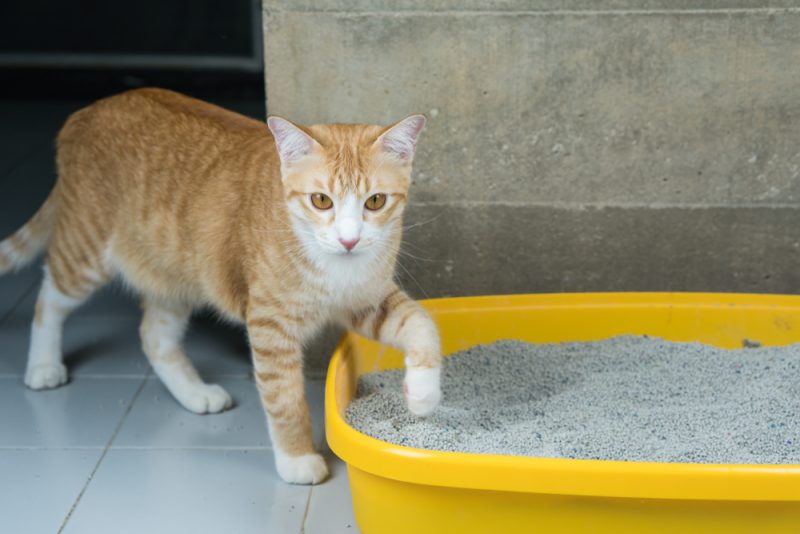It’s no secret that the cost of living has risen substantially over the last few years, leaving Americans struggling to make ends meet. Despite financial worries, you must still provide for your pets, and knowing how to save money is handy. If you’re a cat owner looking for ways to save money on cat care, we’ve got you covered.
Cats are relatively low maintenance compared to dogs, and they don’t typically need a ton of toys or particular bedding to be happy. However, you still have routine checkups to keep up with and cat food to buy for your beloved feline. Still, you want to be as cost-effective as possible. In this post, we explore 11 ways to save money on cat care that are both effective and easy.

The 11 Ways to Save Money on Cat Care
1. Adopt, Don’t Shop
If you’re contemplating adding a cat to your family, one way to save is to adopt or rescue a cat instead of buying from a breeder. Some cat owners prefer a particular cat breed obtained through a cattery or cat breeder, and having a purebred cat may be a priority. But typically, buying a cat from a breeder is going to be much more expensive, especially depending on the cat breed you’re after, such as a Maine Coon or Sphynx.
Adopting from a shelter or rescue is much cheaper; plus, you’ll be helping a cat in need find their forever home. Here’s a little statistic for you: Each year, approximately 3.2 million cats enter U.S. shelters1, and each year, approximately 530,000 cats are euthanized. In our opinion, that’s 530,000 too many. Even if you’re looking for a particular breed, you may still find the breed at a shelter or rescue.

2. Use Clumping Cat Litter
Cat litter is a must when owning a cat, and the litter itself can be as expensive as the cat food you buy. However, even though clumping litter may be a bit more expensive, it’s a more cost-effective option in the long run.
Non-clumping litter requires more litter box changes, but with clumping litter, you can simply scoop out waste and replace the spot with new litter rather than having to change out the entire litter box each time.
Simply put, clumping cat litter reduces the amount of litter that needs to be changed, resulting in less frequent cat litter purchases.
3. Consider Pet Insurance
Pet insurance is getting more attention these days, and it’s definitely something to consider as a pet owner. Cats are generally less expensive to insure compared to dogs, but the trick for a low monthly premium is to buy the insurance while your cat is young. The older a pet is, the more expensive the insurance will be and the higher the risk of issues being considered pre-existing conditions and therefore, not covered.
Most pet insurance companies allow you to customize your plan to fit your budget. For example, you can customize the deductible amount and reimbursement percentages to reach a monthly premium you can afford. Some companies even offer multi-pet or military discounts.
4. Do Not Free Feed
Free feeding is when you leave food out for your cat to eat whenever the mood strikes; however, this can end up costing you more money in cat food. Allowing your cat to free feed may also cause them to put on extra pounds, leading to health issues, such as feline diabetes.
Some cats may exhibit self-control, but if your cat likes to snack throughout the day, getting them on a routine feeding schedule will be a healthier option, in addition to saving you money on cat food.

5. Make Your Own Cat Food
Making your own cat food can be extremely cost-effective; however, before even considering making your own cat food, we strongly suggest asking a vet how to do this safely so that your cat gets all the necessary nutrients and calories required daily for a healthy lifestyle.
The vet can guide you in the right direction for vet-approved recipes your cat will love, all while keeping them healthy and happy. The food should be complete and balanced, with exactly the correct portion sizes. The most important thing is ensuring your fur baby gets all the macronutrients, vitamins, and minerals required to thrive, and this can be hard unless you have the direct help of a professional.
Need veterinary advice but can't get to the clinic? Catster recommends PangoVet, our online veterinary service. Talk to a vet online and get the answers and advice you need for your cat without having to leave your living room — all at an affordable price!

6. Look For the Best Cat Food Values
When searching for cat food, it’s important not to skimp on quality to save money. It is possible to find great value without sacrificing the quality of the food, such as buying the food in bulk. Cheaper cat food typically contains fillers and artificial ingredients that are not healthy for your cat, and feeding them low-quality cat food will end up costing you more in vet bills down the road.
Ensure you keep an eye out for cat food coupons. Some pet stores allow you to sign up for a reward program, which you most certainly should do. For example, you may get a free bag of cat food after your tenth purchase, or you may accumulate points that can be applied for a discount on your overall purchase.
7. Make Your Own Cat Toys
Cats are a bit different from dogs when it comes to toys and play, but cats do love their playtime, and it’s essential for both mental and physical health. However, it doesn’t take much to entertain a cat; for example, a cat may have a field day playing in the cardboard box a toy came in rather than playing with the actual toy itself.
You can make cat toys inexpensively with items you may already have lying around in the home. Cardboard from toilet paper rolls, paper bags, old shirts, ping pong balls, and empty plastic bottles are all excellent materials to make your own cat toys. You can even make wand teasers from a wooden dowel and twine or ribbon, which we all know cats love.
It’s important to use safe objects when making your own cat toys. Always ensure your cat has an escape route if playing with a paper bag or something similar, and avoid tiny objects your cat can swallow to prevent choking, like bottle caps or loose ribbons; everything should be cat-proofed.

8. Limit the Number of Treats
You can save money on cat treats if you limit how many treats your cat can have daily. Remember that your cat should be receiving all the necessary nutrients through high-quality cat food, and extra treats are not required, but hey, we know cat owners love to spoil their kitties.
However, providing treats sparingly will help both your wallet and your cat’s overall health. Feeding too many treats can lead to weight gain, which can open up a whole can of worms with your cat’s health.
9. Make Your Own Scratching Post
Providing your cat with a scratching post is an essential item. It’s useful for both mental and physical stimulation and helps keep your cat’s nails healthy and in shape. Scratching posts are also furniture savers, as the last thing you want is to come home to a shredded couch that was particularly expensive.
You can make your own post using some wood, sisal rope, old carpet, non-toxic glue, and other similar items. When making your own scratching post, ensure all materials you use are safe for your cat. It’s best to ask your vet what materials to use to ensure you use items that will not harm your pet.
10. Spay or Neuter Your Cat
Thousands of cats end up in shelters each year, and having your cat spayed or neutered can help cut that number drastically.You don’t want your female cat to end up with an unplanned litter and all the economic and moral responsibilities that it entails.
In addition, having your cat spayed or neutered can also be beneficial for your cat’s overall health and extend their life, as it can eliminate the development of certain cancers, which can be extremely costly to treat.

11. Keep Up With Vet Checkups
As a cat owner, it’s vital to take your cat in for yearly checkups and to keep up to date on all vaccines to keep your cat healthy. We’ve touched on pet insurance, but bear in mind that in order to have your cat’s yearly checkups covered, you usually need to add this service to your policy, which may or may not be worth it, depending on your location and your particular veterinarian.
Nonetheless, keeping up with yearly checkups will end up saving you money on potential illnesses that can come with neglecting your cat’s veterinary care.

Conclusion
Being a cat owner doesn’t mean you have to break the bank to keep your cat healthy and happy. To recap, look for coupons and other saving methods, such as enrolling in your pet store’s reward program. Keep your cat’s yearly checkups and vaccines current, make your own cat toys and scratching posts, invest in clumping litter, limit treats, control food portions (avoid free feeding), consider pet insurance, and adopt, don’t shop. By implementing these suggestions, you can save money on cat care not only in the short term but in the long term as well, which is equally important.
Featured Image Credit: JSep, Shutterstock


















